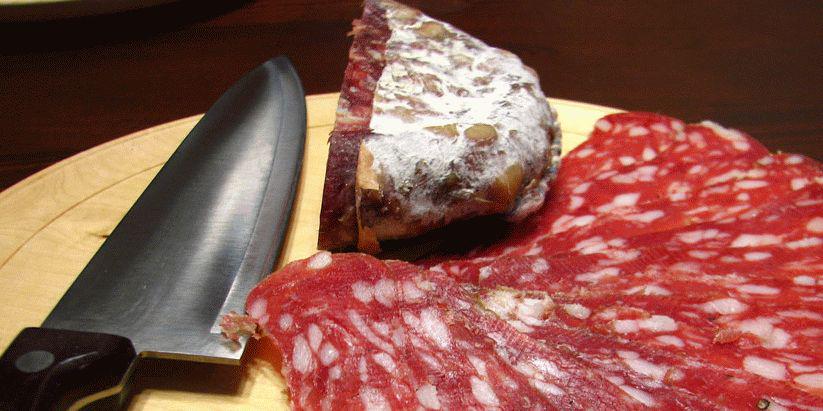
Slovenia’s Upper Savinja Valley, snuggled beneath high Alpine peaks, is known for its exceptional scenic beauty. But locals are just as proud of an unusual dish that has long been a distinctive product of many farms in the area.
For centuries, just about every homestead in the valley produced Upper Savinja stomach sausage. The oval type of sausage was made of locally-produced pork cubes and bacon, with a seasoning of sea salt, pepper, and garlic, with the mixture encased in a pig bladder. Its exact origins are unknown, but the earliest written mentions date back to the 17th century.
Farms in the area were remote and widely scattered, living conditions were difficult, and meat was, for many centuries, a rare delicacy. Traditionally, Upper Savinja stomach sausage was only eaten during festive events and religious holidays. In later years, when living standards rose, it became more common, and was frequently enjoyed after a particularly hard day’s work on the field. Bread was usually the sole accompaniment.
Eventually, Upper Savinja Valley stomach sausage became embraced by the elites. In the interwar era, King Alexander of Yugoslavia was said to have been particularly enthusiastic devotee of the dish, and when King George V of Britain came to Slovenia, he enjoyed stomach sausages so much that he had them sent to the U.K. for years afterwards.
Attempts to make the Savinja Valley-style sausage in other parts of Slovenia were unsuccessful. It turned out that much of the flavor was the result of the valley’s local environment – the fresh Alpine air, the type of fodder given to the pigs, and so on.
In 2011, the Slovenian government ensured that any product sold as Upper Savinja Valley stomach sausage must originate in this valley; the dish received a special geographic designation that recognizes the long history of a unique product that has long been the pride of a remote Slovenian valley.

































































